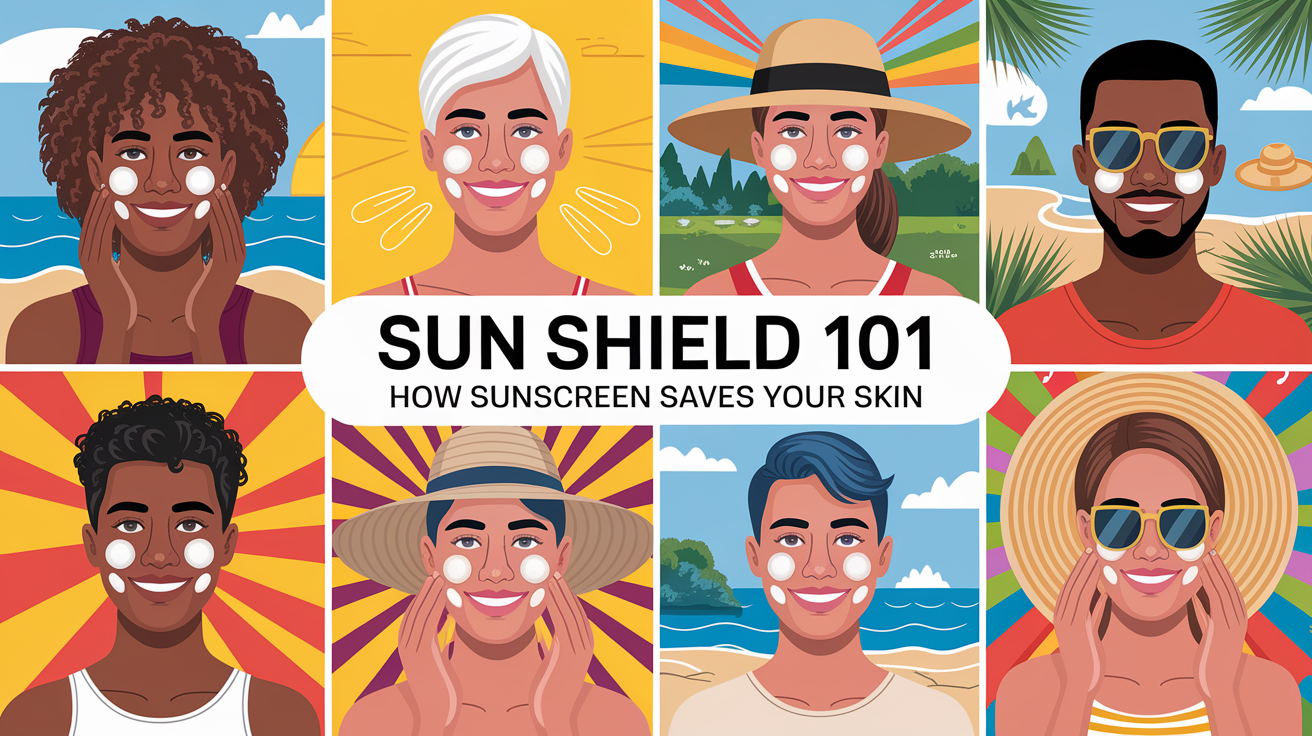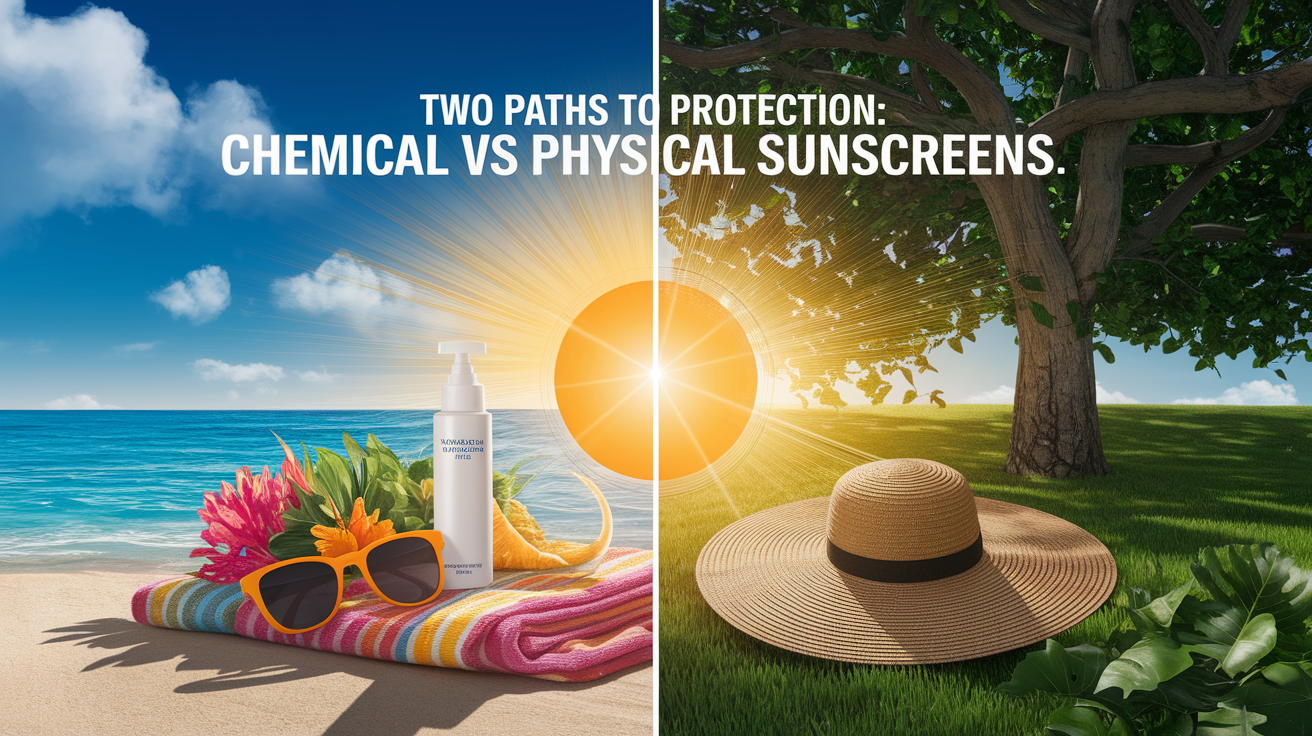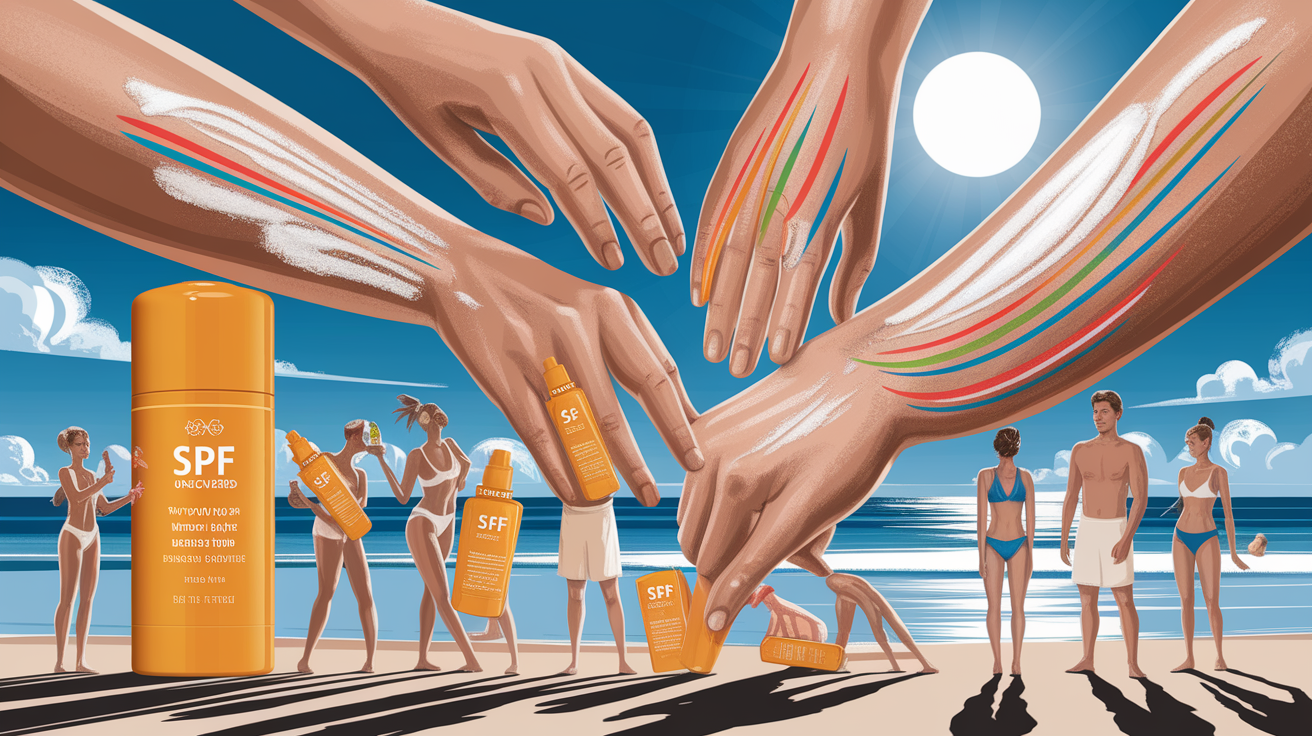Quick Answer: Sunscreen works through two main mechanisms: chemical sunscreens absorb UV radiation and convert it to harmless heat, while physical sunscreens reflect and scatter UV rays away from your skin. Both types create a protective barrier that prevents harmful ultraviolet radiation from damaging skin cells and causing sunburn, premature aging, and skin cancer.
Ever wonder how that creamy lotion in your beach bag actually shields your skin from the sun’s powerful rays? The science behind sunscreen is surprisingly fascinating! Whether you’re slathering on SPF 30 before a day at the pool or applying your daily moisturizer with sun protection, you’re using one of modern science’s most clever inventions. Let’s dive into the amazing world of UV protection and discover exactly how sunscreen keeps your skin safe.
Sun Shield 101: How Sunscreen Saves Your Skin
Sunscreen acts as your skin’s personal bodyguard against harmful ultraviolet radiation. Think of it as an invisible shield that either absorbs dangerous rays like a sponge or bounces them away like a mirror. The primary function of sunscreen is to prevent UV rays from reaching and damaging your skin cells.

When you apply sunscreen, you’re creating a protective layer that intercepts UV radiation before it can penetrate your skin. This process happens through two distinct mechanisms:
- Absorption: Chemical sunscreen ingredients soak up UV energy and transform it into harmless heat
- Reflection and scattering: Physical sunscreen particles bounce UV rays away from your skin surface
The effectiveness of this protection depends on the sunscreen’s active ingredients, their concentration, and how well you apply the product to your skin. Just like how materials can absorb UV light while remaining transparent to visible light, sunscreen ingredients are specifically designed to interact with the invisible ultraviolet portion of sunlight.
UV Radiation 101: Why Sunscreen Matters
Understanding UV radiation helps explain why sunscreen is so important for skin protection. Sunlight contains different types of radiation, but two types pose the greatest threat to your skin:
UVB Rays: The Burning Culprit
UVB rays primarily cause sunburn and direct DNA damage that can lead to skin cancer. These rays have higher energy and directly attack the outer layers of your skin. When you get a painful red sunburn after forgetting sunscreen at the beach, you’re experiencing UVB damage firsthand.
UVA Rays: The Silent Ager
UVA rays penetrate deeper into your skin, contributing to premature aging, oxidative stress, inflammation, and skin cancer risk. According to Stanford Medicine, UVA radiation creates long-term damage that accumulates over time, leading to wrinkles, age spots, and photoaging.

Both types of UV radiation generate free radicals in your skin cells, which cause oxidative damage and break down important proteins like collagen. This is why dermatology experts emphasize daily sun protection as the most effective anti-aging strategy.
UV radiation damages skin cells at the molecular level, making sun protection crucial for preventing both immediate sunburn and long-term skin damage.
Two Paths to Protection: Chemical vs Physical Sunscreens
The main difference between chemical and physical sunscreens lies in how they interact with UV radiation. Both types are effective, but they work through completely different mechanisms.
Chemical Sunscreens: The UV Absorbers
Chemical sunscreens contain organic compounds that absorb ultraviolet radiation. Common active ingredients include:
- Avobenzone: Excellent UVA protection
- Octinoxate: Effective against UVB rays
- Homosalate: UVB absorption
- Oxybenzone: Broad-spectrum protection (though facing environmental scrutiny)
These compounds work by absorbing UV energy, which causes their molecules to enter an excited state. They then dissipate this absorbed energy as harmless heat, preventing UV rays from penetrating your skin. It’s similar to how pigments absorb specific wavelengths of light – the molecules are engineered to capture invisible UV radiation while letting visible light pass through.
According to research from the American Chemical Society, some chemical ingredients can generate free radicals during this process, which is why antioxidants are often added to formulations.

Physical Sunscreens: The UV Reflectors
Physical sunscreens use inorganic mineral compounds that create a physical barrier on your skin:
- Zinc oxide: Provides excellent broad-spectrum protection
- Titanium dioxide: Effective against UVB and some UVA rays
These mineral particles protect your skin by reflecting and scattering UV radiation away from the surface, much like how sunlight is reflected and scattered by tiny particles in water droplets. The particles act as millions of tiny mirrors and prisms that redirect harmful rays before they can reach your skin cells.
Physical sunscreens work immediately upon application and are less likely to cause skin irritation, making them ideal for sensitive skin types.
Hybrid Formulations
Many modern sunscreens combine both chemical and physical ingredients to provide comprehensive broad-spectrum protection. This approach maximizes the benefits of both mechanisms while minimizing individual limitations.
SPF Uncovered: What the Numbers Mean for Your Skin
SPF (Sun Protection Factor) measures how long sunscreen prolongs the time it takes for UVB rays to redden your skin compared to no protection. Understanding these numbers helps you choose the right level of protection.
The SPF Scale Explained
| SPF Level | UVB Protection | Theoretical Time Extension |
|---|---|---|
| SPF 15 | ~93% | 15x longer before burning |
| SPF 30 | ~97% | 30x longer before burning |
| SPF 50 | ~98% | 50x longer before burning |
Does a higher SPF provide significantly more protection? The jump from SPF 30 to SPF 50 only increases protection by about 1%, according to data from the Skin Cancer Foundation. However, this small difference can be meaningful during extended outdoor exposure.

Proper Application Guidelines
SPF ratings assume proper application, which most people don’t achieve:
- Amount needed: One ounce (two tablespoons) for entire body coverage
- Face application: Nickel-sized amount for adequate protection
- Timing: Apply 15-30 minutes before sun exposure for chemical sunscreens
- Reapplication: Every two hours or after swimming/sweating
Is sunscreen effective immediately after application? Physical sunscreens work instantly, while chemical sunscreens need 15-30 minutes to fully activate as the active ingredients absorb into your skin.
Broad-Spectrum and Photostability: Staying Protected All Day
Broad-spectrum protection ensures your sunscreen guards against both UVA and UVB rays. This comprehensive coverage is crucial because both types of UV radiation contribute to skin damage and cancer risk.
The Science of Broad-Spectrum Coverage
Broad-spectrum sunscreens combine multiple UV filters to absorb, scatter, and reflect a wide range of ultraviolet wavelengths. The National Center for Biotechnology Information explains that effective formulations require careful balancing of different active ingredients to cover the entire UV spectrum.
Just as a molecule’s structure affects the light it absorbs, different sunscreen ingredients are designed to target specific UV wavelengths. Combining multiple ingredients creates comprehensive protection.

Photostability: Maintaining Protection
Photostability refers to a sunscreen’s ability to maintain effectiveness after exposure to sunlight. Some chemical ingredients degrade when exposed to UV radiation, reducing their protective power over time.
Photostable ingredients include:
- Ecamsule: Maintains UVA protection under sun exposure
- Methylene bis-benzotriazolyl tetramethylbutylphenol (MBBT): Long-lasting broad-spectrum coverage
- Bis-ethylhexyloxyphenol methoxyphenyl triazine (BEMT): Stable UVA and UVB protection
Physical sunscreens like zinc oxide and titanium dioxide are naturally photostable, which explains why they maintain consistent protection throughout the day.
Beyond the Bottle: Living Safely Under the Sun
Effective sun protection extends beyond choosing the right sunscreen. A comprehensive approach combines multiple strategies for optimal skin protection.
Smart Sun Safety Practices
- Seek shade: Especially during peak UV hours (10 AM – 4 PM)
- Wear protective clothing: Tightly woven fabrics provide excellent UV barriers
- Use wide-brimmed hats: Protect face, neck, and ears
- Don’t forget sunglasses: UV radiation can damage your eyes too
- Practice daily use: Apply sunscreen even on cloudy days
Environmental and Safety Considerations
Sunscreens undergo rigorous safety testing and are considered safe when used as directed. However, environmental concerns have led to innovations in reef-safe formulations. Some chemical ingredients like oxybenzone have raised concerns about coral reef damage, prompting regulatory changes and new formulations.
According to Stanford Medicine research, both chemical and physical sunscreens are safe for human use, though mineral sunscreens may be preferable for those with sensitive skin or environmental concerns.
Choosing the Right Sunscreen
Select sunscreens that are:
- Broad-spectrum (protects against UVA and UVB)
- SPF 30 or higher for daily use
- Water-resistant for swimming or sweating
- Suited to your skin type and preferences
The science behind how sunscreen ingredients work shows us that both chemical and physical formulations offer effective protection when applied properly and reapplied regularly.
Wrapping Up
Sunscreen represents a remarkable scientific achievement – invisible protection that shields your skin from harmful radiation while allowing you to enjoy outdoor activities safely. Whether you choose chemical sunscreens that absorb UV energy or physical sunscreens that reflect it away, you’re using sophisticated technology that prevents sun damage at the molecular level.
Remember that consistent, proper application matters more than the specific type of sunscreen you choose. Apply generously, reapply frequently, and combine sunscreen use with other protective measures for comprehensive sun safety. Your skin will thank you for understanding and using this amazing scientific tool that keeps you protected under the sun.













